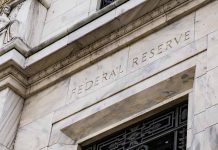
The wealth gap between homeowners and renters in America has reached staggering proportions, with implications for financial stability and future economic growth.
At a Glance
- Homeowners have a median net worth of nearly $400,000, compared to just $10,400 for renters
- 78% of homeowners own appreciating assets beyond their primary residence, versus 48% of renters
- Rent prices increased by 27% from early 2020 to August 2022
- Half of renter households spend over 30% of their income on housing
- Policy solutions include down payment assistance, improved credit scoring, and increasing affordable housing supply
The Stark Reality of the Wealth Gap
Recent data reveals a stark contrast in wealth accumulation between homeowners and renters in America. Homeowners boast a median net worth of nearly $400,000, while renters lag far behind with a median of just $10,400. This disparity isn’t solely attributed to home equity; homeowners typically possess $200,000 in home equity along with other assets such as stocks, bonds, and retirement accounts that renters often lack.
The wealth gap extends beyond real estate. A striking 78% of homeowners own appreciating assets beyond their primary residence, compared to only 48% of renters. This difference in asset ownership contributes significantly to the widening financial divide between these two groups.
The wealth gap between the country's renters and homeowners is soaring: Homeowners' median net worth is about $400,000, compared to just $10,400 for renters, according to a recent report from the Aspen Institute. Because building home equity typically plays a critical role in… pic.twitter.com/mnVtzJBdVq
— Money (@Money) December 14, 2024
Financial Challenges Faced by Renters
Renters face numerous financial hurdles that impede their ability to build wealth. Only 39% of renters have income exceeding their monthly expenses, compared to 54% of homeowners. This disparity in disposable income limits renters’ capacity to save and invest for the future.
The situation for renters has worsened in recent years. Rent prices surged by 27% from early 2020 to August 2022, outpacing wage growth and inflation. As a result, half of renter households now spend more than 30% of their income on housing, with 27% allocating over half their earnings to rent. This financial burden forces many renters to cut back on other essential expenses and hinders their ability to save for the future.
Systemic Obstacles and Their Impact
The path to homeownership is fraught with obstacles for many renters. Student loan debt, lower savings rates, and subprime credit scores are common barriers that prevent renters from transitioning to homeownership. These factors, combined with rapidly increasing home prices, have made the traditional American Dream of owning a home seem increasingly unattainable for a large portion of the population.
The consequences of this wealth gap extend beyond individual finances. It impacts the overall economy and social mobility, potentially exacerbating inequality for future generations. The traditional view of homeownership as a path to the middle class and financial stability is becoming increasingly out of reach for many Americans.
Potential Solutions and Policy Recommendations
Addressing the wealth gap between renters and homeowners requires a multifaceted approach. Experts suggest several strategies to help renters build wealth and potentially transition to homeownership:
1. Increasing wages and expanding rental assistance programs to alleviate the financial burden on renters.
2. Boosting the supply of affordable housing to address the shortage that drives up costs.
3. Implementing down payment assistance programs and improving credit scoring methods to help renters overcome barriers to homeownership.
4. Expanding existing programs like workplace retirement savings to help renters build wealth outside of real estate.
5. Developing renter-focused wealth-building strategies.
These policy recommendations aim to provide all Americans with access to wealth-building tools, regardless of their homeownership status. By addressing the issues that contribute to the wealth gap, policymakers can work towards creating a more financially stable society for both renters and homeowners alike.
A new report from @AspenFSP reveals just how stark the renter-homeowner wealth gap is, with renters possessing less than 3 percent of the wealth of homeowners.
Listen and learn more in @Marketplace at the link below.https://t.co/MIo7tOeRUq
— The Aspen Institute (@AspenInstitute) December 2, 2024






















